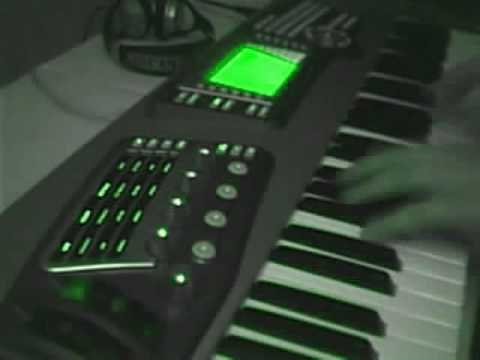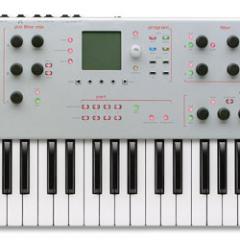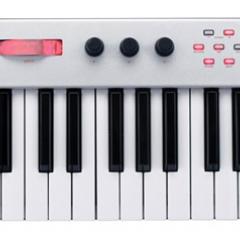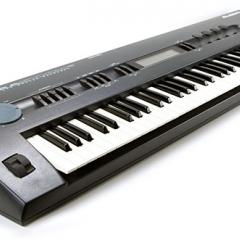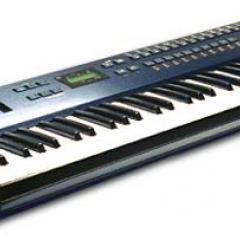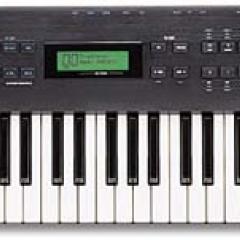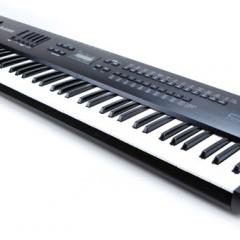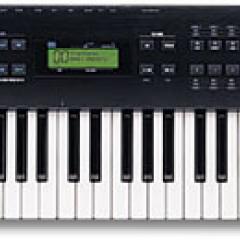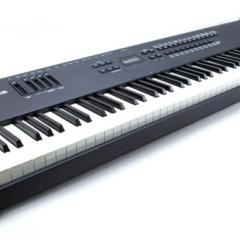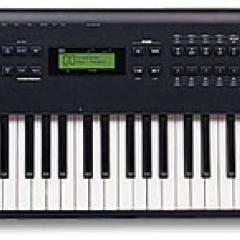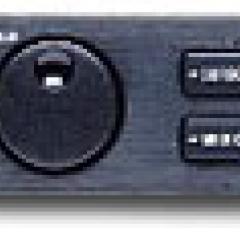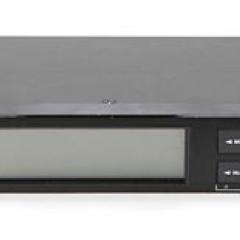Alesis Fusion

The Alesis Fusion is a synthesizer workstation packed with features for the modern keyboardist. Released in 2005, Alesis managed to cram four powerful synthesis engines and an 8-track, 24-bit hard disk recorder into the Fusion's sleek, silver frame. The types of synthesis on offer include Sample Playback, FM, Virtual Analog (VA) and Physical Modeling – all powered by three floating-point Texas Instruments digital signal processors. It comes in 61-key synth action (6HD) and 88-key weighted (8HD) versions.
The Sample Playback engine lets you create four oscillator patches from either ROM multisamples or your own custom samples. Your samples can be recorded in through the dedicated stereo port, or loaded in via compact flash/USB; you can then edit and store them on the Fusion's large hard drive (40 or 80 GB). Import of WAV and SoundFont is supported, opening up a massive world of sounds. With 64MB of RAM, expandable to 192MB (and tricks available to double the usable amount of RAM) you won't fit a massive orchestral library in this synth, but for most sound design and live applications it will be plenty. Your samples can then be shaped using the Fusion's plethora of filter types, envelopes, and its massive mod matrix – nearly anything can be routed anywhere!
The six-operator FM engine can give you those DX-type sounds, full of character. However, it isn't compatible with DX SysEx, but you can still have a lot of fun creating your own sounds. The VA engine is very powerful, with many similarities to the Ion/Micron line! There are three oscillators with multiple wave shapes, FM, Sync, PWM and 20 different filter types including lowpass, bandpass, highpass and a 4-band EQ for every patch. The Physical Modeling section includes both a Wind and a Reed model, and while not amazingly realistic, they can be abused to create some very strange pads!
Putting all these synthesis types together, you start to see the power of the Fusion. Using Combis you can mix and match all of them, run them through effects, create massive evolving soundscapes using SoundFonts mixed with physically modeled wind and big VA strings, and more. Trigger loops and arpeggiators with one hand while doing a six oscillators thick lead synth freak-out with the other, the possibilities are staggering!
The effects section is OK. The distortion is a little weak and needs tweaking to get really gnarly results, but the bread and butter effects are all decent enough. The Hard Disk Recorder and Sequencer are basic but quite useable as a musical sketch pad. For example, if you and a guitarist wanted to jam something out, you could record your keyboards as a MIDI part to the sequencer, and then record a guitarist’s amplifier through one of the 8-track HD recorder's inputs on the back of the machine. Speaking of inputs, connectivity is generally good with eight quarter-inch inputs for the multi-track, stereo sampling in, two main outputs, two auxiliary outputs, MIDI, USB 2.0, all the things you'd expect on the back of a modern keyboard.
With all these features at a price point under $1,000, you'd think that this synth would be massively popular. However, early in its life there were some annoying bugs in the firmware, and some features were initially under-developed, such as the pattern-based sequencing. Although Alesis did a great job of releasing regular updates over its first three years, the Fusion's reputation became tarnished enough to blow it into obscurity.
The Fusion isn't perfect, it has issues like any piece of hardware, but for the price they can be had today, they make a wonderful performance keyboard, sound-design tool, and all around synth.
Demos & Media
